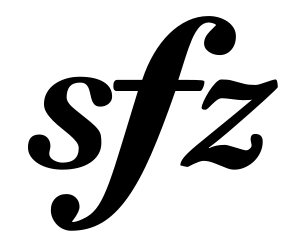Dynamics (music) facts for kids
In music, dynamics are all about how loud or soft the music is. They show how the sound changes from one note to another, or from one part of a song to another. Dynamics help make music exciting and expressive!
Contents
What Do Dynamics Mean?
Composers use special symbols to tell musicians how loud or soft to play. These symbols are usually Italian words, or short versions of them.
Here are the main dynamic symbols you'll see in music:
| Symbol | Italian Word | What it Means |
|---|---|---|
| pp | pianissimo | Very, very soft |
| p | piano | Soft |
| mp | mezzo piano | Medium soft |
| mf | mezzo forte | Medium loud |
| f | forte | Loud |
| ff | fortissimo | Very, very loud |
| < (cresc.) | crescendo | Getting louder |
| > (dim.) | diminuendo | Getting softer |
You might see more than two ps or fs. This means the music should be extremely soft or extremely loud. For example, the composer Tchaikovsky sometimes used five ps or fs! However, usually you will only see up to three in sheet music.
How Loud is "Loud"?
Dynamic levels are not exact measurements like inches or pounds. How loud mp (medium soft) should be depends on many things. It depends on the instrument, the size of the room, and what else is happening in the music. The most important thing is that the dynamic levels are correct compared to each other. For example, f should always be louder than p.
Dynamics Through History
Some composers are very specific about the dynamics they want. Others let the musician decide more. Long ago, composers like Bach only wrote a few dynamic marks. Even Mozart mostly used just p (soft) and f (loud). By the 1800s, composers started writing much more detailed dynamics in their music.
Special Dynamic Marks
Sometimes, you'll see marks that show a sudden strong sound, called an accent.
- Sforzando means a strong, sudden accent. It is often written as sf, sfz, or fz.
- sfzp (or sfp) means a sudden loud accent followed right away by soft playing.
Gradual Changes
The terms crescendo and diminuendo (sometimes decrescendo) mean the music gradually gets louder or softer. They can also be shown by symbols called "hairpins."
- A hairpin that opens up (<) means crescendo (getting louder).
- A hairpin that closes (>) means diminuendo (getting softer).
For a quick change in dynamics, you might see molto cresc. or molto dim. (molto means a lot). For very slow changes, poco a poco cresc. or poco a poco dim. are used (poco a poco means little by little).
See also
 In Spanish: Dinámica (música) para niños
In Spanish: Dinámica (música) para niños



